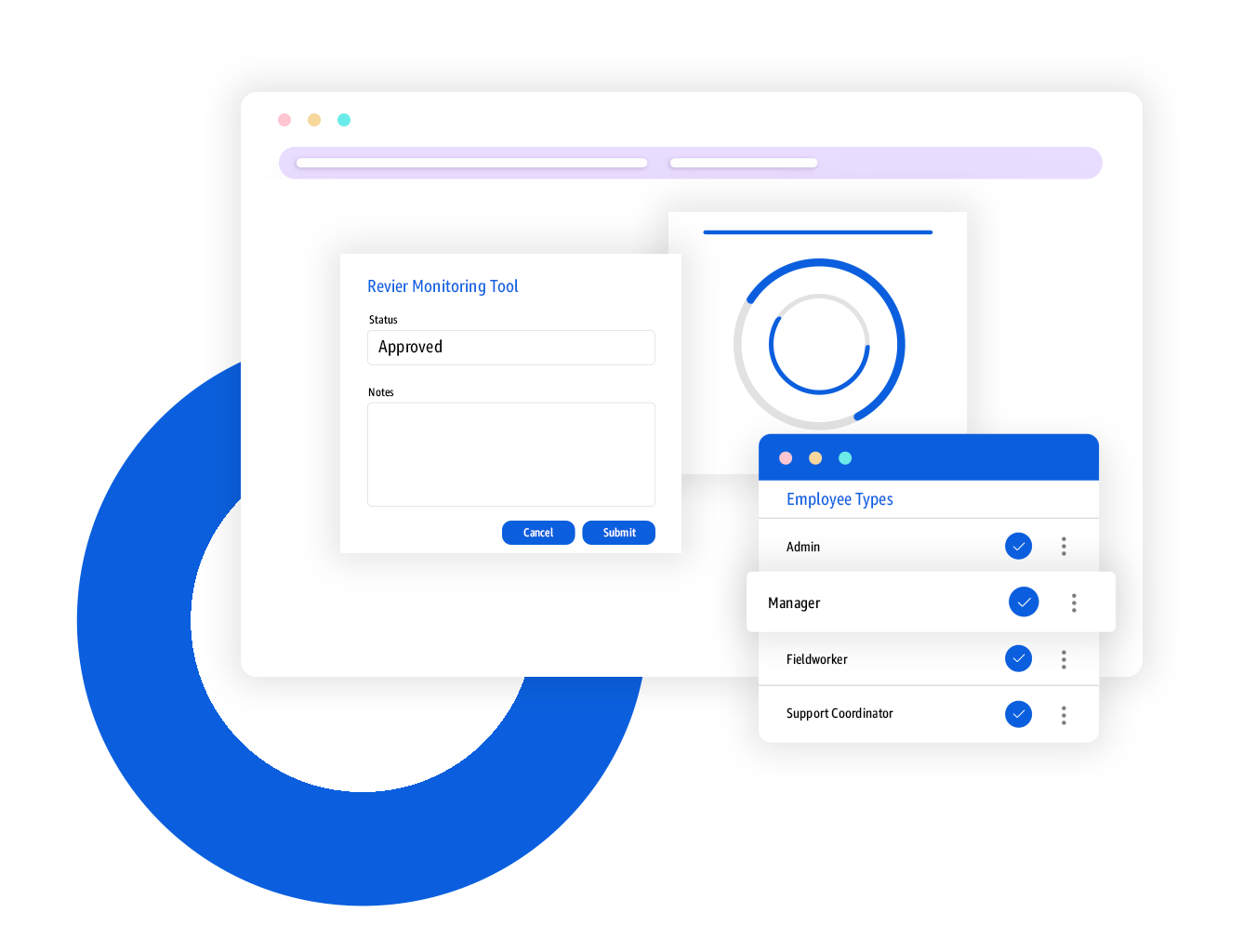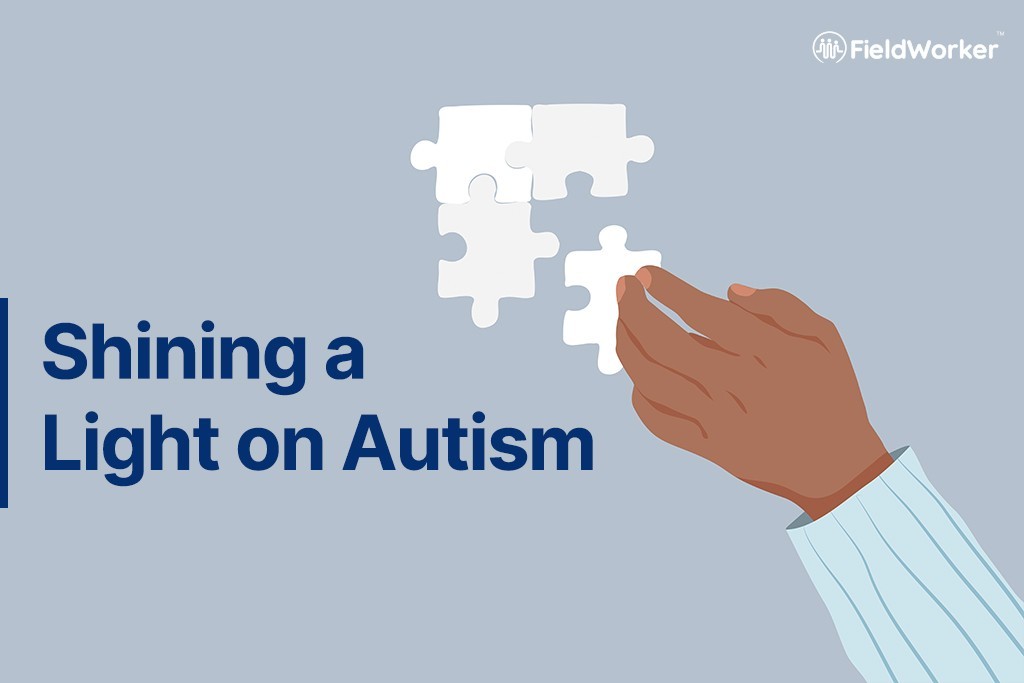Did you know that April is World Autism Month? The UN has sanctioned April 2 as World Autism Awareness Day, but there’s much to do in terms of raising awareness of autism, especially as it can encompass such a broad compass of conditions and individuals.
That’s why April is a time to not just raise awareness, but to continue educating ourselves and others about autism, support individuals with autism across the globe, and also of course to celebrate these individuals!
We’ve put together some information here on the basics of autism and gathered some helpful resources for you to share and spread the knowledge.
What exactly is autism?
“Autism” can encompass a range of symptoms affecting individuals very differently. That’s why you may often hear it spoken about as a “spectrum” of conditions, as it can impact some individuals more than others to varying degrees.
Let’s take a step back though and consider more generally what characterizes autism. According to the DSM-V, the key sign of autism is a difference in the way an individual communicates, relates to others, and interacts in a social setting across different environments.
In terms of how this might manifest itself in reality:
- An individual may be entirely nonverbal in their communication, or otherwise speak in a different way with non-typical patterns of speech and intonation.
- They may have difficulty in comprehending non-verbal communication, such as hand gestures and body language.
- They may also have trouble making friends and maintaining friendships due to these differences in how they communicate.
- Additionally, they may not be able to keep a typical back-and-forth style of conversation going.
In addition to communication, individuals with autism may also have restricted and repetitive patterns of behaviour. In reality, this might mean:
- Individuals have a narrow range of interests, and may know a lot about one topic in extreme depth.
- They may repeat certain sounds or phrases they hear (known medically as echolalia), and equally they may repeat movements they see.
- They may prefer set routines, and feel unsettled by changes or unexpected disruption.
- Additionally, they may be extremely sensitive or significantly less sensitive to different sensory stimuli, for example, scents, sounds and light.
How common is autism?
As of 2020, the CDC reported that 1 in every 54 people in the US had been diagnosed with autism. Comparing this with previous data, this is roughly twice as high as had been reported in 2004, so if you’re wondering if autism is more visible nowadays, you wouldn’t be wrong.
Why is this rise the case? Over the past few decades, there’s been considerably more education and awareness raised about autism. Our understanding of the condition has improved, and even those in the population who haven’t met individuals of autism typically have a casual awareness of what it might be. So in view of this, it’s natural that more people have become aware that they or their relatives may be living with autism, leading to more people seeking diagnosis and support.
What are the 5 kinds of autism?
So, we’ve already mentioned that autism is a spectrum. Experts have grouped symptoms into 5 different kinds of autism, which we’ll explore here. However, remember that as with any spectrum, not every individual with autism will fit neatly into one group.
In fact, as our understanding of autism evolves, it’s possible that other groups will be identified, or existing groups will change. Let’s take a look at the 5 groups you might have already heard of.
Asperger’s Syndrome
Asperger’s is probably one of the most known types of autism, however, the term isn’t actually used anymore. Instead, it is now classified as Level 1 Austism Spectrum Disorder in the DSM-5. However, many people will still refer to it as Asperger’s.
Individuals with Asperger’s may have the following symptoms:
- Less flexibility with patterns of thought and behaviour, including sticking to routines.
- Challenges when switching from one activity to another.
- Flat speech without much intonation, in addition to challenges in communicating feelings via speech.
- Difficulty interacting with peers and forming friendships.
- Strong verbal skills and often above average intelligence.
Rett Syndrome
Rett syndrome is one of the rarer kinds of autism, mostly affecting girls and being noticed in a child’s toddler years. Individuals with Rett syndrome face many challenges, but with proper care and support, can enjoy and live fulfilling lives. Individuals with Rett syndrome benefit from family time spent doing things that they enjoy.
Rett syndrome typically involves:
- A loss of standard movement and coordination.
- Challenges with communication and speech.
- In some cases, breathing difficulties.
Childhood Disintegrative Disorder (CDD)
CDD may also be referred to as Heller’s syndrome, and involves a delay in development affecting language and communication, motor skills and social behaviour. Children with CDD often develop at the expected rate until sometime between 3 and 10 years old, when they experience developmental loss, which can be a huge challenge and surprise for families who up until then won’t have known that their child had any form of autism.
Around 90% of individuals with CDD are boys, and may involve the following:
- Individuals being unable to independently go to the toilet if they had already been potty trained.
- A loss of language skills and vocabulary.
- A regression in social skills and behaviours.
- A regression in motor skills.
Kanner’s Syndrome
Kanner’s syndrome was first identified in 1943 by psychiatrist Leo Kanner. He noted that children with Kanner’s will often be extremely alert and have above-average intelligence, but will also exhibit:
- A lack of emotional attachment to other people, including family members.
- Challenges with communication and interaction with peers.
- Uncontrolled speech.
- An obsession with handling certain objects.
- Exceptional rote memory and visuospatial skills with difficulties in learning in other areas.
Pervasive Developmental Disorder – Not Otherwise Specified (PDD-NOS)
This is one of the milder forms of autism and can encompass a large range of symptoms, the most common of which include challenges with social and language development.
Children with PDD-NOS may experience:
- Delays in learning to talk and developing their language skills.
- Delays in learning how to walk and developing other motor skills.
- Challenges in interacting with peers and forming friendships in their earlier years.
What are some of the early signs of autism?
It’s worth noting that autism may be missed in childhood – especially when you realise that it’s only over the last few decades that we’ve had more awareness and education on what it encompasses. So although here we’re taking a look at some of the early signs in autism that parents or guardians may notice in children, it’s possible for adults to get a diagnosis later in life, in which case they may retrospectively realise that they exhibited certain signs as children.
Social differences
- Children might not hold eye contact, or might not make eye contact at all.
- They may not be responsive to their parents’ or guardians’ smiles or other facial expressions.
- They might not look at objects people point at, or point themselves to get others to look.
- Children may be less likely to share toys or other objects they find interesting with their parents or guardians.
- They may not make facial expressions that you would expect in various situations.
- They may also have difficulty in making friends and maintaining friendships.
Communication differences
- Children may experience delays in acquiring language.
- They may repeat what others say without understanding the meaning.
- They might not respond to their name, but instead respond to other sounds.
- They may also mix up pronouns, for example, referring to others as “I”.
- Children may also have less interest in communication and be less likely to initiate a conversation.
- They may also have an exceptional rote memory, specifically for numbers, letters, specific topics or jingles and sounds.
Behavioral differences
- Children may rock themselves, spin, sway or flap their hands for long periods of time.
- They may like strict routines with a set order and have difficulty in transitioning between activities.
- They may also be intensely interested in just one or two usual activities, doing them repeatedly throughout the day.
- Children may play with parts of a toy rather than the whole toy, for example, wheels on a toy truck.
- They may not cry if they’re in pain or experiencing fear.
- They may also be very sensitive or not at all sensitive to certain sensory triggers, including scents, sounds, lights, textures and touch.
How is autism treated?
While there is no cure for autism, treatment aims to support individuals with autism, helping them to understand their condition and needs when they are able to and encouraging them to take part in activities they enjoy – which are all part of leading a fulfilling and happy life.
As you might expect from a spectrum condition, there are many possible approaches when it comes to treatment. We recommend this resource from the CDC for a detailed overview, but we’ll round up the possible approaches here. What is important is to consider the exact needs of each individual and find the best approach for them.
Behavioral approaches focus on changing the way individuals behave, developing an understanding of what may cause certain patterns of behavior and what the consequences may be. These approaches have the most evidence out of all approaches when it comes to treating the various symptoms of autism.
Developmental approaches focus more on specific developmental skills, for example, language or motor skills. These are typically combined with behavioral approaches.
Educational approaches involve treatment in a classroom setting, which may include tailoring education to the needs of individuals with autism. For example, many with autism are exceptional visual learners, so the teaching method can be adapted accordingly. One example of this approach is the TEACCH method, which you can read more about here.
Social-relational approaches look at improving social skills and building emotional connections with others. These may involve relatives or peer mentors directly.
Pharmacological approaches involve medications. While there are no medications that treat the core symptoms of autism, there are a number of conditions that often also impact individuals with autism, such as anxiety, issues with sleep, or gastro-intestinal issues. Medication can therefore help with these conditions.
Psychological approaches are designed to help those living with autism deal with anxiety and depression and any other mental health conditions they may experience. An example of this approach is Cognitive Behavioral Therapy (CBT) which teaches individuals to consider how their thoughts and feelings impact their behaviors and vice versa.
Complementary and alternative treatments don’t fit with the other approaches we’ve looked at, but can be used to supplement them and improve outcomes. They include a range of treatments, including following special diets, art therapy and herbal supplements.
Resources
If you want to read more about autism, we recommend looking at the following specialized organizations who each have their own resources available:

